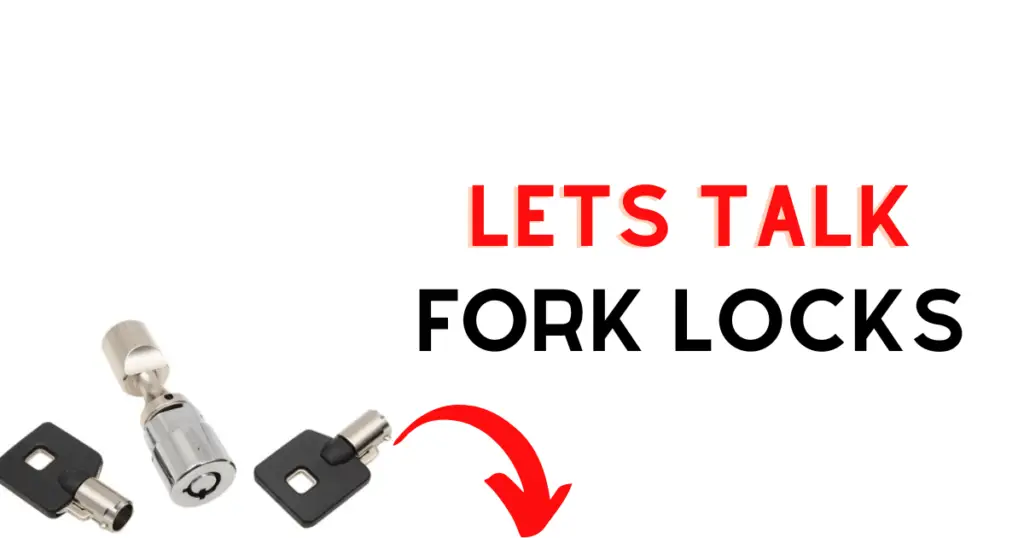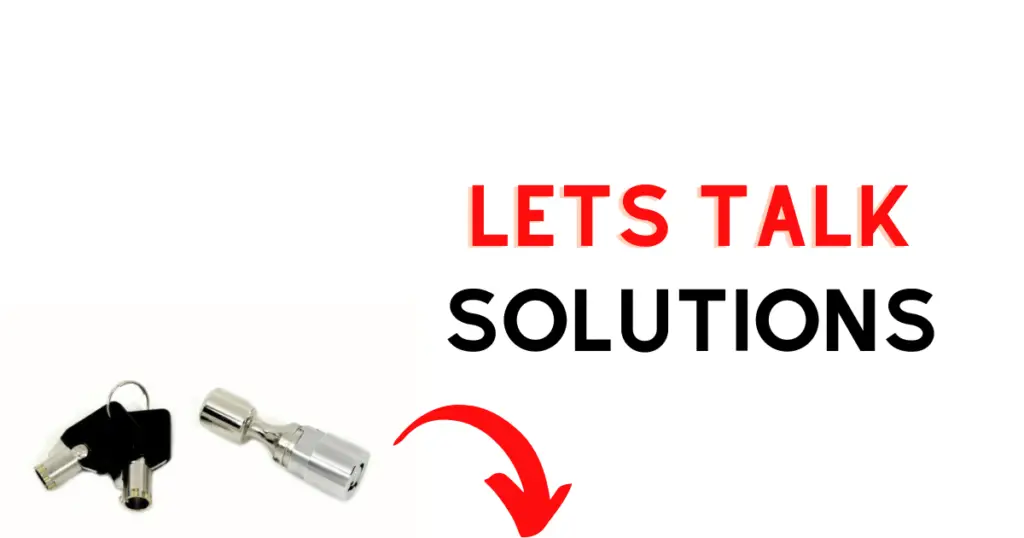Harley Davidson bikes pack a punch with their standout looks, roaring engines, and butter-smooth rides. But even the cream of the crop isn’t immune to hiccups now and then. Ever run into trouble with your Harley’s fork lock? It’s that nifty feature designed to keep your bike secure by stopping the front wheel and handlebars from moving, ensuring no one can just hop on and zoom off. But when it starts acting up, it’s a whole heap of hassle, leaving you annoyed, inconvenienced, and worrying about your safety.
Let’s break down the headaches you might face when encountering Harley Davidson fork lock problems. Ever had your lock stuck in the “on” position? That’s when you can’t turn your key, leaving the forks locked tight. It could be due to a snapped part inside or something jamming the mechanism. Or what about when the lock doesn’t do its job, and your forks remain unlocked? That’s your bike telling you it’s easy pickings for thieves, possibly because of a worn-out lock mechanism or issues with your key or ignition. Ever wondered what really causes these lock troubles and how you can fix them before your ride takes a hit? Let’s find out!
Related read: Harley Davidson Front Forks Problems: Tips, Warnings + More
Understanding The Fork Lock Mechanism Used on Harleys

Design and Functionality
The fork lock mechanism is an essential security feature in Harley Davidson motorcycles that helps to keep the bike safe when parked. The fork lock is designed to lock the front fork of the motorcycle in place, preventing it from being steered or moved. The mechanism consists of a cylinder, a tumbler, and pins that align with the grooves on the key.
When the key is inserted into the fork lock, the pins inside the cylinder align with the grooves on the key. This allows the tumbler to rotate, which in turn releases the locking mechanism and allows the fork to move. When the key is removed, the pins inside the cylinder return to their original position, locking the fork in place.
Common Fork Lock Issues
Despite its importance, the fork lock mechanism can sometimes fail, causing problems for Harley Davidson owners. One of the most common issues is the fork lock becoming stuck or unresponsive. This can make it difficult to lock or unlock the fork, making it challenging to park the motorcycle safely.
Another common problem is the fork lock failing to engage properly. This can cause the fork to move even when it is locked, making it unsafe to park the motorcycle. In some cases, the fork lock may even fail to release, making it impossible to move the motorcycle.
To prevent these issues, it is essential to maintain the fork lock mechanism regularly. This involves cleaning and lubricating the cylinder and pins to ensure smooth operation. In some cases, it may be necessary to replace the fork lock mechanism entirely to ensure the safety and security of the motorcycle.
In conclusion, understanding the design and functionality of the fork lock mechanism is essential for Harley Davidson owners to maintain the safety and security of their motorcycles. Regular maintenance and prompt repair of any issues can help prevent common fork lock problems and ensure the smooth operation of the mechanism.
Troubleshooting Guide for Harley Fork Lock Problems
Harley Davidson fork lock problems can be frustrating and can prevent you from starting your motorcycle. If you’re experiencing issues with your fork lock, don’t worry, there are a few things you can do to troubleshoot the problem.
Key Won’t Turn
If your key won’t turn in the fork lock, the first thing you should check is the key itself. Make sure it’s the right key for your motorcycle. If it is, try lubricating the lock with a graphite lubricant. If that doesn’t work, you may need to replace the lock cylinder.
Lock Stuck in Position
If your fork lock is stuck in the locked position, it could be due to a jammed lock mechanism. This can be caused by a broken internal component or a foreign object lodged inside. To fix this, you can try removing the lock and cleaning it thoroughly. If that doesn’t work, you may need to replace the lock.
Fork Lock Removal Process
If you need to remove the fork lock, you can do it yourself with a few simple tools. First, remove the lock screw and lock pin. Then, remove the lock from the steering stem. If the lock is stuck, you may need to drill it out or grind it off. Be sure to consult your motorcycle’s manual or watch instructional videos before attempting this DIY task.
Overall, troubleshooting your Harley Davidson fork lock problems can be a simple process if you have the right tools and knowledge. By following these steps, you can get your motorcycle up and running in no time.
How Can You Prevent These Problems With The Fork Lock?
Maintaining and caring for the fork lock is essential for its optimal performance and longevity. Regular inspection, cleaning, and lubrication are crucial steps in ensuring that the fork lock functions correctly.
Regular Inspection
Regularly inspecting the fork lock is essential to detect any signs of wear or damage. It is recommended to check the fork lock every time the motorcycle is serviced or at least once a year. The rider should look for any signs of damage or wear on the lock mechanism, key, and housing. If any signs of damage or wear are detected, the rider should take the motorcycle to a dealer or mechanic for repair or replacement.
Cleaning and Lubrication
Cleaning and lubricating the fork lock is essential for its optimal performance. Dirt, dust, or grime may accumulate inside the lock mechanism, creating resistance and making the key hard to turn and engage the lock. The rider should clean the fork lock with a soft cloth, mild soap, and water. Avoid using harsh chemicals that may damage the lock mechanism or housing.
After cleaning, the rider should lubricate the fork lock with a high-quality lubricant. Lubrication helps to reduce friction and wear on the lock mechanism, making it easier to turn the key and engage the lock. The rider should use a lubricant that is specifically designed for motorcycle fork locks and follow the manufacturer’s instructions.
In conclusion, maintaining and caring for the fork lock is essential for its optimal performance and longevity. Regular inspection, cleaning, and lubrication are crucial steps in ensuring that the fork lock functions correctly. The rider should follow the maintenance instructions provided in the owner’s manual and take the motorcycle to a dealer or mechanic if any signs of damage or wear are detected.
When To Replace Your Fork Lock (and How To Decide If It’s Right For You)

Harley Davidson motorcycles are known for their powerful engines and iconic design, but even the best machines can encounter issues from time to time. One common problem that Harley Davidson owners may face is with their fork locks. The fork lock is an important security feature that helps keep your motorcycle safe when parked. If the fork lock is not working properly, it is recommended to replace it with a new one.
Choosing the Right Replacement
Before purchasing a new fork lock, it is important to make sure that it is compatible with your Harley Davidson model. It is recommended to consult with a dealer or a dealership to ensure that you are purchasing the correct replacement. It is also important to consider the quality of the replacement and make sure that it meets the required safety standards.
Installation Steps
Replacing a fork lock can be a time-consuming and labor-intensive process. It is recommended to follow the installation steps carefully to avoid any damage to the motorcycle. The following are the general steps for installing a new fork lock:
- Remove the old fork lock by unscrewing the screws that hold it in place.
- Install the new fork lock by screwing it in place.
- Connect the wires to the ignition switch.
- Reassemble the motorcycle parts that were removed during the installation process.
Testing the New Lock
After installing the new fork lock, it is important to test it to make sure that it is working properly. The following are the general steps for testing a new fork lock:
- Insert the key into the new fork lock and turn it to the lock position.
- Turn the handlebars to the left and right to make sure that the fork lock engages and disengages properly.
- Test the ignition switch to make sure that it is working properly.
In conclusion, replacing a faulty fork lock is an important step in maintaining the security of your Harley Davidson motorcycle. It is recommended to choose the right replacement, follow the installation steps carefully, and test the new lock to ensure that it is working properly. If you are unsure about any of the steps, it is recommended to consult with a dealer or a dealership for assistance.
Frequently Asked Questions
What are common issues with Harley-Davidson fork locks on recent models?
Harley-Davidson fork locks are known to have issues with the locking mechanism, which can cause difficulties in handling and control. Some of the common issues with fork locks on recent models include the key not turning, the lock not engaging, and the lock getting stuck in the engaged position.
How can you troubleshoot a stuck fork lock on a Harley-Davidson motorcycle?
If you encounter a stuck fork lock on your Harley-Davidson motorcycle, there are a few things you can try to troubleshoot the issue. First, try wiggling the handlebars while turning the key to see if that helps disengage the lock. If that doesn’t work, try spraying some lubricant into the lock to see if that helps loosen it up. If neither of these methods work, it may be necessary to take the motorcycle to a professional mechanic for further inspection.
Are there any known defects in Harley-Davidson fork locks from 2012 to 2021?
There have been reports of defects in Harley-Davidson fork locks from 2012 to 2021, including issues with the locking mechanism and the key not turning. However, it is important to note that not all motorcycles from this time period are affected and that Harley-Davidson has issued recalls and made improvements to address these issues.
What steps should be taken if a Harley-Davidson fork lock won’t disengage?
If a Harley-Davidson fork lock won’t disengage, the first step is to try wiggling the handlebars while turning the key. If that doesn’t work, try spraying some lubricant into the lock to see if that helps loosen it up. If the lock still won’t disengage, it may be necessary to take the motorcycle to a professional mechanic for further inspection.
How can you maintain a Harley-Davidson fork lock to prevent future problems?
To maintain a Harley-Davidson fork lock and prevent future problems, it is important to keep the lock clean and lubricated. Use a dry cloth to wipe down the lock and key regularly, and apply a small amount of lubricant to the key and lock mechanism to keep everything moving smoothly.
What should you do if you lose the key to your Harley-Davidson’s fork lock?
If you lose the key to your Harley-Davidson’s fork lock, you will need to have a new key made. This can be done by contacting a Harley-Davidson dealership or a locksmith who specializes in motorcycles. You will need to provide proof of ownership and identification to have a new key made.